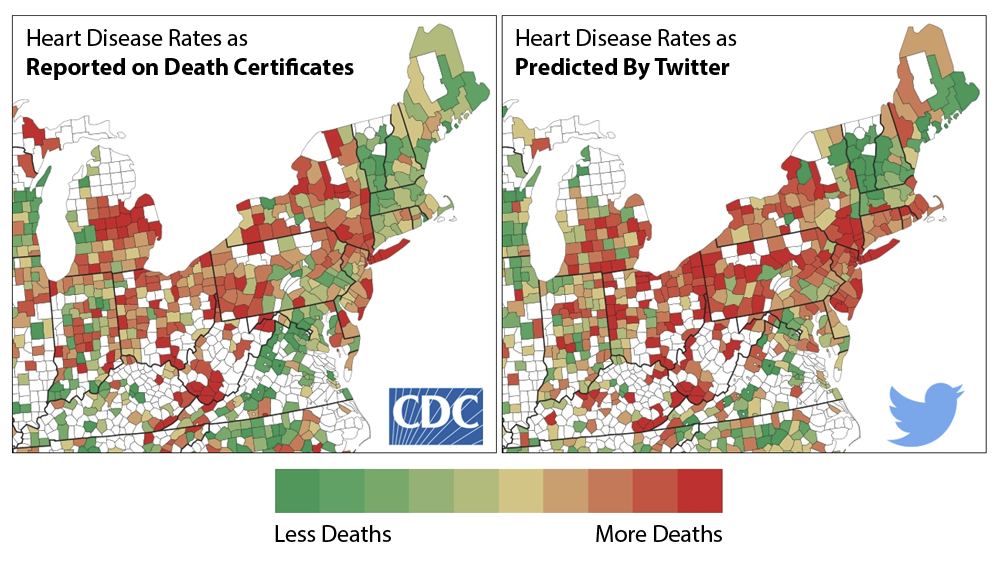While progress in wearables and smart fabrics is impressive, few healthcare providers are equipped to collect and use the data that's generated. Now would be the time to start planning for use in daily practice.
The Internet of Things isn’t about the things, it’s about the data. And while that data is important to many disciplines and industries, it’s of special importance to healthcare—as it enables unprecedented speed and progress in field data collection for research and for applied medicine in individual patient care as well.
While progress in wearables and smart fabrics is impressive, few healthcare providers are equipped to collect and use the data yet. Now would be the time to start planning on how to use this data in daily practice.
What data from wearables and smart fabrics looks like
It’s important to understand first that data from wearables will not come solely from consumer fitness devices, such as FitBit, or from existing medical devices outfitted to connect to and transmit data over the Internet. New, never-before-imagined devices will arise specifically to gather information needed to advance healthcare in every specialty—and in general patient care, too.
What we’re really looking at here is a deluge of health data from more devices than we can envision at the moment.
And while that data will be structured—since it comes from machines, making it theoretically more readily useful—a lack of standards in metric reporting will complicate its use in practice. For example, some machines will report the patient’s temperature in Celsius, and some in Fahrenheit. The same is true in other metrics, as measuring units fluctuate between countries and devices. And, not all machines of the same ilk will measure the same things.
But there are other discrepancies that will need to be overcome or accounted for in the analysis as well, including erroneous data reporting—such as false reads. For an example of some of the many challenges, take a look at the long list of medical device databases available on the U.S. Food and Drug Administration (FDA) website.
Data silos and researcher nightmares
There also exists a number of challenges in using data from myriad healthcare and research databases that must also be overcome before the new deluge of data from wearables and smart fabrics exacerbate the issues.
“Any scientist looking for information across these various databases has to query them, one at a time, and hope the resulting data will have enough metrics in common to make for a useful comparison,” wrote Meredith Salisbury in her post in Forbes. “For someone who wants to connect these databases so a single query could look at all of this data in one shot, the current setup is a nightmare. (Imagine if internet search providers could only access certain sections of the Web; you’d have to enter “funny kitten video” repeatedly into Google, Yahoo!, and Bing in the hopes that one of those engines was connected to the part of the internet where the data was located.)”
Indeed, this is such a prevalent problem in DNA data bases alone that many researchers and industry watchers wish President Obama had applied all of his Precision Medicine Plan’s money—instead of the mere $5 million allocated—to solving this one issue.
“In the research community, this is a widely acknowledged problem—and it will take a lot more than $5 million to fix,” continues Salisbury in that same post. “For the important biomedical findings that might be available from data we already have but just can’t search properly, it would have been well worth spending the entire initiative’s budget on making existing databases interoperable, and on requiring data format standards for all federally funded DNA databases in the future.”
Certainly, there is more work to be done to make health and DNA data more universally usable and easier to combine with other medical research and patient data. But it is also prudent to learn from this that we face the exact same problems in using data from wearables and smart fabrics, if we don’t do something proactively to manage it now.
It’s time for the entire medical and research community worldwide to come together, instead of working alone or in small groups, to address standardizing data from devices and fabrics and integrating data bases. Until that happens, data will be trapped in silos and of little mainstream medical use.
Examples of incoming data from new devices
Plenty of new data will come from unexpected places and new fields of study, but some is already coming from innovative devices within existing specialties. For example, in sports medicine, new devices are gathering far more granular data than a doctor or researcher can observe from standing on the sidelines watching the game or from examining the player afterwards.
Take, for example, i1 Biometrics’ Vector MouthGuard for football and hockey players that detects concussion-producing head impacts in real-time. This wearable provides important data for treating a specific player’s injury but can also add information to the big data pot for research on head injuries—research that will ultimately help treat far more people with head injuries than just football and hockey players.
Here is a short video demo explaining how the Vector MouthGuard works.
Source: YouTube
But advances in smart fabrics, which could soon be used in new smart fabric sports helmets, may make devices such as this mouth guard obsolete shortly after they hit the market.
The result will be that first we’ll have data from the first generation of devices—such as the new mouth guards—followed by a period in which we will also have data from the next generation of devices, such as smart fabric in helmets. Eventually, we may have another period where data will come exclusively from the fabrics and not from the mouth guards at all.
All that data will be stored and used repeatedly in the future. But this can create additional issues in interoperability and integration for the purposes of widespread analyses.
For a good overview of how smart fabrics are currently progressing, especially in medical use, check out this TEDx video by Drexel’s ExCITe Center designer Geneviève Dion, who runs the Shima Seiki Haute Technology Laboratory there. Her focus is solely on smart fabric design.
“Imagine a maternity blouse that monitors mom and baby's health – or a shirt that amplifies your WiFi signal,” reads the video teaser on the YouTube page.
Source: YouTube
Data from and to 3D printers must be collected and analyzed too
Note in the above video the important role of 3D printers in manufacturing smart fabrics. It’s important to understand that data is sent to these printers, and from them too, in the quest to both perfect each item’s production over time and to protect patented information. Eventually a good bit of this data will also be fed into research data bases—further stressing storage and analytics capabilities.
Hospitals, labs and clinics will also have to be able to analyze 3D printer data. For one thing, that’s how they will get supplies in the near future and those supplies must be inventoried and managed. The days of receiving physical shipments of goods from trucking and shipping companies are numbered. All medical supplies, including smart fabrics from surgical and patient gowns to bed sheets, will eventually be produced onsite on 3D printers.
In addition, human transplant organs are already being produced on 3D printers and that will soon become more commonplace. As will other medical and surgical uses not yet imagined.
And all of that will require and produce data that must be harnessed, managed, stored and analyzed by healthcare providers and administrators.
Preparing to use new sources of data
For now, healthcare organizations should be closely watching developments in wearables, smart fabrics, and 3D printers in order to begin planning for their inclusion in daily practice and how that data will be used internally.
When investing in big data tools, look for those that are especially adept at handling disparate data and that afford an automated means to reconcile data—particularly in measurement fluctuations (e.g., Fahrenheit vs Celsius) and metric alignment (match same data that carries varying metadata)—and other tasks that will make data management less of a burden on your organization.
Further, get proactive in discussions with wearable, smart fabric and 3D printer manufacturers now so that data management issues can be addressed collectively, thereby preventing many of these issues from happening at all.
Healthcare is changing fast. It’s vital that you get ahead of that curve and help guide its path.
Email me or share your comments and questions below. Together we’ll get everything sorted out.
Good luck to you in your endeavors.
The nuviun industry network is intended to contribute to discussion and stimulate debate on important issues in global digital health. The views are solely those of the author.
Log in or register for FREE for full access to ALL site features
As a member of the nuviun community, you can benefit from:
- 24/7 unlimited access to the content library
- Full access to the company and people directories
- Unlimited discussion and commenting privileges
- Your own searchable professional profile








.jpg)